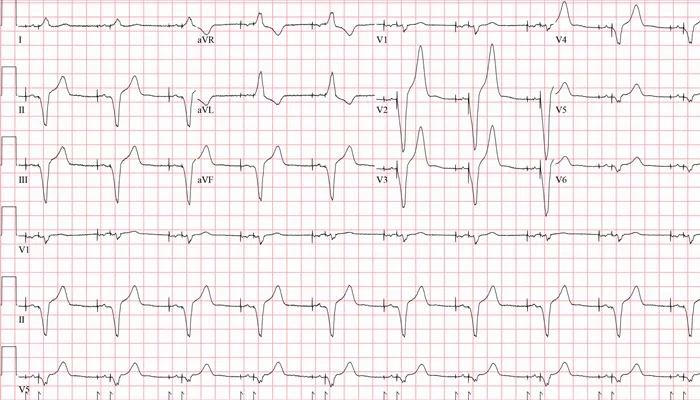Sinus arrhythmia, a condition characterized by variations in heart rate due to changes in the respiratory cycle, is commonly observed in healthy individuals, particularly in younger people. Often perceived as a benign phenomenon, it can sometimes raise concerns, especially when accompanied by other symptoms or health conditions. Understanding when sinus arrhythmia becomes dangerous is crucial for both patients and healthcare providers to ensure appropriate management and treatment.
What Is Sinus Arrhythmia?
Sinus arrhythmia refers to the natural variation in heart rate that occurs with each breath. During inhalation, the heart rate typically speeds up, and during exhalation, it slows down. This variability is a normal physiological response controlled by the autonomic nervous system, specifically the parasympathetic and sympathetic branches, which regulate the heart’s rhythm and response to breathing.
Types of Sinus Arrhythmia
Respiratory Sinus Arrhythmia: The most common type, linked directly to the breathing cycle. It is prevalent in young and healthy individuals, including athletes. It generally poses no health risk and is often a sign of good cardiovascular fitness.
Non-Respiratory Sinus Arrhythmia: This type occurs independently of the breathing cycle and may be associated with other conditions. It requires careful evaluation to determine its significance and potential risks.
SEE ALSO: What Are The Characteristics of Sinus Arrhythmia?
When Is Sinus Arrhythmia Dangerous?
While sinus arrhythmia is usually benign, there are specific scenarios where it may signal underlying health issues or warrant further investigation:
Presence of Additional Symptoms: If sinus arrhythmia is accompanied by symptoms such as chest pain, dizziness, shortness of breath, or fainting, it could indicate a more serious underlying condition. These symptoms warrant immediate medical evaluation to rule out potential cardiac issues or other health problems.
Underlying Heart Conditions: Individuals with pre-existing heart conditions such as heart failure, coronary artery disease, or previous myocardial infarctions may experience changes in their heart’s rhythm. In these cases, sinus arrhythmia could exacerbate existing conditions or complicate the management of these diseases.
Significant Changes in Heart Rate: If the variation in heart rate is extreme or inconsistent, it may be indicative of an arrhythmia that requires further investigation. Regular monitoring and analysis of heart rate variability can help determine if there is a need for intervention.
Elderly Population: In older adults, sinus arrhythmia can sometimes be associated with more complex heart rhythm disturbances or other cardiac conditions. This demographic requires careful assessment to distinguish between normal sinus arrhythmia and potentially dangerous arrhythmias.
Persistent Arrhythmia: If sinus arrhythmia persists despite changes in breathing patterns or other lifestyle modifications, it may warrant further diagnostic testing to ensure it is not a manifestation of a more serious condition.
Diagnostic Approaches
To evaluate whether sinus arrhythmia is dangerous, several diagnostic tests and evaluations can be employed:
Electrocardiogram (ECG): An ECG can help identify the presence and pattern of arrhythmias and assess the heart’s overall rhythm and electrical activity.
Holter Monitor: This portable device records heart activity over an extended period, providing a detailed analysis of heart rate variability and rhythm.
Echocardiogram: An ultrasound of the heart can assess cardiac structure and function, helping to identify any abnormalities that might contribute to arrhythmias.
Stress Testing: Evaluating heart function during physical exertion can reveal how sinus arrhythmia behaves under stress and whether it affects cardiovascular performance.
Management And Treatment
In most cases, sinus arrhythmia does not require specific treatment. However, managing associated symptoms or underlying conditions can be crucial. Here are some management strategies:
Lifestyle Modifications: Adopting a healthy lifestyle, including regular exercise, a balanced diet, and stress management, can improve cardiovascular health and potentially mitigate the effects of sinus arrhythmia.
Medication: If sinus arrhythmia is linked to an underlying condition, appropriate medications may be prescribed to manage the underlying health issue and improve overall heart health.
Monitoring: Regular follow-up with a healthcare provider can help track the progression of sinus arrhythmia and ensure that it remains benign or address any changes promptly.
Addressing Underlying Conditions: Effective management of pre-existing heart conditions or other health issues can reduce the impact of sinus arrhythmia and improve overall health outcomes.
Conclusion
Sinus arrhythmia is generally a benign condition, particularly when associated with respiratory variations. However, when accompanied by symptoms, pre-existing heart conditions, or significant changes in heart rate, it can become a cause for concern. Through careful evaluation, diagnostic testing, and appropriate management, healthcare providers can ensure that sinus arrhythmia remains under control and does not pose a threat to cardiovascular health. Regular check-ups and a proactive approach to managing heart health are essential for those experiencing sinus arrhythmia to maintain optimal well-being.

